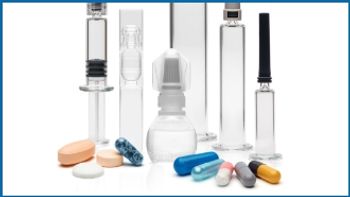
- Pharmaceutical Technology-07-02-2017
- Volume 41
- Issue 7
Packaging Improves Medication Adherence
A staggering percentage of people do not take their medication correctly, but pharmaceutical packaging aims to improve patient compliance using new technology to address reasons for non-adherence.
Despite decades of effort to design packaging that helps people take the right dose of the right prescription at the right time, the number of prescriptions that are not taken as directed has been stuck around 50% since at least 1993 (1, 2). Sometimes the reason for lack of compliance, or what increasingly is referred to as “adherence” (see Sidebar), is financial. The patient can’t afford the medication, so the prescription goes unfilled. But more often, lack of compliance is due to difficulty accessing and dispensing the proper dose and remembering dosing times.
“The severity of medication non-adherence has been so well documented that the healthcare industry is taking a much more serious look at how to improve patient behavior,” reports Ward Smith, director of Marketing at Keystone Folding Box Co. “People are starting to recognize compliance is a really important factor in determining the outcome for the patient,” agrees Graham Reynolds, vice-president and general manager of Global Biologics at West. Reynolds explains: “Non-adherence has significant financial consequences. The patient ends up in the hospital or back in the hospital and puts additional strain on the healthcare system. From a pharmaceutical company perspective, non-adherence is widely recognized as a cause for a significant loss of revenue; a number recently estimated at $600 billion.”
Solid-dosage compliance packaging
To improve adherence, many compliance packaging designs have been introduced. The Pharma Compliance Pack from August Faller Group features an integrated sliding mechanism (see Figure 1). As doses are taken, perforated tabs are removed to provide access to the next dose(s) on the blister card. “The patient can directly see which tablets he/she already took,” says Tanja Feldmüller, head of Marketing and Innovation at August Faller.
Keystone’s child-resistant Key-Pak and Ecoslide-RX packaging also calendarize medication dosing. “This type of packaging has been documented to improve medication adherence,” says Smith. He notes, however, that it appears to be less effective for patients on multiple medications. “…if a patient takes more than five medications; all of the packages (blisters and bottles) can become overwhelming,” he explains.
Some patients on multiple medications resort to pill minders with compartments for each day and/or various times of day. However, this solution can be problematic. Filling errors can result in missed doses or overdoses. Sensitive medications can be exposed to detrimental environmental conditions, and product information is separated from the dose.
“No one solution seems to exist to solve non-adherence,” says Smith. As a result, there’s growing interest in more holistic approaches that integrate packaging with interactive devices, software, rewards programs, and personalized support.
An example of a more holistic approach is a smart, wireless pill bottle from AdhereTech. Used primarily for specialty medications like cancer drugs, each bottle contains a wireless cellular chip and numerous sensors. It collects adherence data in real-time, analyzes the information, and populates a secure dashboard. If a dose is missed, the system sends an automated alert via phone call or text message to the patient, caregiver, or pharmacist. The bottle itself offers alerts via blinking lights or audible chimes.
The smart bottles are child-resistant and supplied free to patients and pharmacies through programs sponsored by pharmaceutical companies. When the prescription is dispensed, the pharmacist inputs the necessary information into the system, and the bottle is ready for use. Sensors detect when the bottle is opened and reclosed and can monitor other attributes such as the contents of the bottle, battery level, and signal strength. “If the bottle is in an area with no cellular coverage, the bottle holds data on up to 180 doses for later transmission,” says Josh Stein, CEO and cofounder of AdhereTech. The pharmacist can access the compliance dashboard and intervene if the patient needs help. Results to date show the wireless pill bottle boosts adherence up to 20%, while persistence (the time on therapy) jumps to 30%.
Another smart packaging option, the iCap closure from TimerCap, is Bluetooth-enabled with red, yellow, and green lights to visually indicate medication status. Each time the cap is opened, the onboard timer stops and returns to zero. The cap also collects data for real-time or email transmission. Compatible with Android, iPhone, and Apple Watch devices, the child-resistant, push-and-turn closure is sold as a kit with two caps, two bottles, two batteries, and the MediSafe iConnect app. Various colors make it possible to differentiate medications. The Medi-Safe iConnect app moves setup of the iCap closure to a Smartphone or other device, minimizing energy consumption and maximizing battery life. In addition to tracking adherence, the MediSafe iConnect app can monitor almost two dozen measurements including glucose levels and weight. The iCap not only helps patients take their medication as prescribed, but also can track and detect opioid abuse and diversion.
With the iCap, the pharmaceutical company sees firsthand when a patient takes a medication. “That knowledge helps fix side effects and other issues and determine why a drug works for some and not others,” says Larry Twersky, CEO of TimerCap. As a result, healthcare providers have a better chance of knowing how a particular drug will work for a patient.
Smart labels equipped with a near-field communication (NFC) chip and/or QR code also can support adherence (see Figure 2). “NFC has multiple advantages compared to a QR code, such as a very high security level for authentication purposes, the possibility to individually change or protect specific information or the enhanced convenience to read the tag with your Smartphone,” says Gene Dul, president of Schreiner MediPharm US. “However, the advantage of including both [code and chip] is that online information is also available to those users that do not have an NFC-enabled Smartphone available.” Labels also can be equipped with other features such as anti-slip varnish, hologram for authentication, or a temperature indicator that changes color when a certain ambient temperature is reached.
Medication management tools from Compliance Meds Technologies (CMT) can be tailored to the needs of various settings such as senior care, addiction treatment, and clinical trials. Tools include the CleverCap LITE; the CleverCap PRO; an optional mobile app called Companion App CMT; and secure, cloud-based reporting/analytics portals. The devices are distributed through the pharmacy, incorporated into existing medication vials/bottles, shipped directly to enrolled patients, or given out by a participating doctor.
Moses Zonana, founder and CEO of CMT, described how the integrated technology works. “The CleverCap PRO … detects when a pill is dispensed and can control the dose, ensuring the patient receives the right dose at the right time. The information is automatically transmitted through cellular 3G networks into the CMT Reporting, Analytics, and Engagement System. Devices can generate visual and sound alerts at predefined timeframes or operate under silent mode. The CleverCap LITE does everything the CleverCap PRO does except it doesn’t actually track at the individual pill level of granularity or control dosage. It tracks when the vial/bottle is accessed or is not properly reclosed to provide an extra layer of security.
“We have observed regimen adherence levels of 95% using CleverCap PRO and regimen adherence levels of 96% using CleverCap LITE. In the majority of our programs, there is an intervention layer in addition to the technology layer, which allows us to obtain those types of successful results. These interventions may incorporate nurse support groups and incentives for better medication habits.”
Smart and holistic systems
Adherence-enhancing smart systems for products other than solid-dosage forms also exist. Options include Eveon’s IntuityJect self-injector (3). A digital monitoring system from Kali Care integrated with dispensing technology from Aptar Pharma supports ophthalmic clinical trials (4). A similar partnership between HealthFactors and Koronis Biomedical Technologies focuses on capturing and sharing inhaler use data in real-time to improve outcomes for people with respiratory conditions.
In some cases, changing the delivery format may improve adherence, particularly for diseases such as schizophrenia where 30–40% of relapses stem from non-compliance. A matchstick-size implantable device, recently patented by Delpor, enables the sustained release of antipsychotics and other molecules and thereby lengthens the interval between doses to several months. The sustained release results in a smoother pharmacokinetic profile and enhanced safety and tolerability. Initial applications for Delpor’s Prozor technology are likely to be a six-month formulation of risperidone and a three-month formulation of olanzapine (5).
Holistic solutions often expand interaction with patients to include simulation, education, and incentives. “As treatment regimens become complex, using engaging technology will help with patient adherence,” predicts Teek Dwivedi, CEO of Ehave, a provider of software that supports planning, treatment, and capture of patient- and clinician-reported outcomes. The patient interacts with Ehave Connect via a dashboard and a mobile app, which help track adherence, symptoms, and side effects. There’s also an incentive component. Dwivedi explains: “The incentivization comes in two forms: a daily goal to complete a task and achievement badges. Our strategy is to treat patient-reported outcomes similar to how activity trackers motivate individuals to reach their exercise goals.”
When it comes to patients and dosage regimens, the term adherence seems to be supplanting the term compliance. Although often used interchangeably, Ward Smith, director of Marketing at Keystone Folding Box, points to established definitions. He reports, “A document from the National Stroke Association states that medication adherence is the act of filling new prescriptions or refilling prescriptions on time. Medication compliance is the act of taking medication on schedule or taking medication as prescribed” (1).
Adherence tends to be viewed more positively. “Adherence encompasses changes in lifestyle and changes in behavior,” says Andrew Dunning, vice-president of Strategic Development at AssistRx, the supplier of iAssist software, which streamlines prescribing, distributing, and administering of specialty medications. Teek Dwivedi, CEO of Ehave agrees. He says, “Adherence is about putting the power with the patient to follow the practices of medicine, whereas compliance is about following the doctor’s orders. In the latter, there’s a sense of subservience rather than the patients being in control of their actions and their health.”
“Adherence is softer terminology that connotes a partnership with the patient toward better outcomes,” adds Moses Zonana, founder and CEO of CMT. As a result, he believes, “Adherence has pretty much become the term of choice with the advent of engagement platforms that bring the patient into the equation.”
Reference
1. National Stroke Association, “Medication Adherence and Compliance,” https://www.stroke.org/sites/default/files/resources/NSA_Med_Adherence_brochure.pdf accessed June 2, 2016.
Improving outcomes via personalized coaching is the driver behind a partnership between Fit4D, a provider of diabetes patient engagement software, and Glooko, a global diabetes data management company. “Glooko’s mobile app enables people with diabetes to automatically sync their blood glucose data from over 95% of the blood glucose meters, continuous glucose monitors, and insulin pumps available on formulary and then augment that data with food, exercise, and medication data,” says David Weingard, CEO of Fit4D. “That data is then made available to Fit4D coaches through the Glooko Population Tracker.”
The impact of the combined technologies can be significant. Weingard reports, “Patients who were engaged in the Fit4D program saw an increased incremental fill rate compared to the control group. Fit4D was able to improve adherence by 20% with non-adherent patients, resulting in better health outcomes and a 3X ROI [return on investment] for the client …. With the addition of data from the Glooko app, Fit4D certified diabetes educators will be able to improve adherence even more because they can reach out to patients proactively based on blood sugar levels to give them timely and relevant guidance.”
Something already in many homes, the Amazon Echo smart speaker, could become an adherence tool. A partnership between Orbita, a provider of voice-first software for connected home healthcare, and ERT, a developer of the EXPERT technology platform for clinical trial data collection, processing, and analysis, is improving how data are captured from participants. “We’re excited … to give patients the power of voice-an important, emerging technology-to complete surveys, verify completion of care pathway tasks, and report health concerns, all of which enables pharmaceutical researchers to move ahead in their clinical development programs quickly and with confidence,” says Andrea Valente, executive vice-president and chief development officer at ERT. With the combined solution, study coordinators can create and manage care plans, and patients and family members can review and manage care tasks via voice as well as mobile phone or web environments (6).
A Smart Injection Pad Training System from Noble, a specialist in biopharma onboarding and device training, helps patients learn how to use self-injectors correctly. A needleless device and pressure-sensing touch pad detect errors and alert the patient. The Smart Injection Pad also helps collect patient data via onboard NFC, Bluetooth, and wi-fi connectivity that enables interface with devices such as smartphones. These data can identify patients who need extra support. “The Smart Injection Pad improves the patient onboarding experience, which is often the most critical time period for establishing adherent behaviors and patient satisfaction,” notes Joe Reynolds, research manager at Noble. The simulation overcomes anxiety associated with self-injection and reduces chances that a patient will avoid starting treatment or discontinue it.
West is collaborating with HealthPrize Technologies to integrate West’s self-injection technologies with their Software-as-a-Service medication adherence and patient engagement platform. HealthPrize rewards can be monetary, educational, or appeal to the patient’s competitive nature. Results can be dramatic. In one demonstration rewards improved refill rates by 50%.
Although rewards can have a positive impact on adherence, Reynolds notes good scores start with an understanding of the needs and concerns of the patient. “You really have to … design the whole system from the point of view of optimizing adherence,” says Reynolds. Is the patient worried about the pain of self-injection? The complexity of the device? “The more the process can minimize stress, worry, and pain, the better the adherence is likely to be,” he says. However, he notes, even the most adherence-enhancing design needs to be accompanied by training and onboarding.
A good example of whole system design is West’s SmartDose platform. The wearable electronic injector delivers injections slowly to reduce injection-associated pain and can support lengthening the time interval between doses. A multisensory training system, being developed in collaboration with Noble, will talk patients through the process from carton opening to completion of the injection. “It’s a good example of all factors coming together to provide a drug delivery system that meets the needs of newer drugs, addresses patient concerns, and hopefully help improve adherence,” concludes Reynolds.
References
1. H. Forcinio, Pharm. Tech. 17 (3) 44 (1993).
2. National Council of Patient Education and Information, Accelerating Progress in Prescription Medicine Adherence: The Adherence Action Agenda (Oct. 2013).
3. UBM EMEA, “Pharmapack Europe Award Winners 2017–20 Years of Innovation,” Press Release, Feb. 3, 2017.
4. Aptar Pharma, “Aptar Pharma Partners with Kali Care to Develop Real-Time Medication Management Technology,” Press Release, May 2, 2017.
5. Delpor Inc., “Delpor Announces Issuance of U.S. Patent Covering Its Novel Implantable Device for Long-Term Delivery of Antipsychotics and Other Drugs,” Press Release, March 7, 2017.
6. Orbita, Inc., “Orbita and ERT Collaborate to Optimize Data Capture, Insights for Pharmaceutical and Device Trials,” Press Release, May 23, 2017.
About the author
Hallie Forcinio has reported on packaging as Pharmaceutical Technology’s Packaging editor for more than 20 years. Her first article for the publication, in March 1993, looked at patient compliance, which continues to be a concern today. Tel 216.351.5824, editorhal@cs.com.
Article DetailsPharmaceutical Technology
Vol. 41, No. 7
Pages: 72–75
Citation:
When referring to this article, please cite it as H. Forcinio, “Packaging Improves Medication Adherence," Pharmaceutical Technology 41 (7) 2017.
Articles in this issue
over 8 years ago
The New World of Biopharmaceutical Manufacturingover 8 years ago
Forty Years of Drug Product Manufacturing Advancesover 8 years ago
Advances in Analytical Testing Tools for the Bio/Pharma Industryover 8 years ago
Ribbon Blenders for Specialty Applicationsover 8 years ago
Coating Module Supports Easy Module Exchangeover 8 years ago
Dissolution Tester Eliminates Water Bathover 8 years ago
Bioreactor Family Includes Single-Use Bagsover 8 years ago
FDA Continues to Promote Quality Drug ProductionNewsletter
Get the essential updates shaping the future of pharma manufacturing and compliance—subscribe today to Pharmaceutical Technology and never miss a breakthrough.





